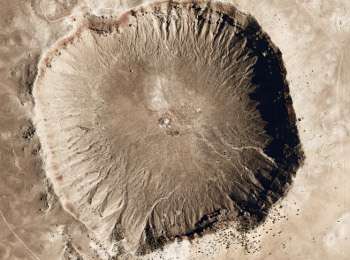Transformations to granular zircon revealed: Meteor Crater, Arizona

Having been reported in lunar samples returned by Apollo astronauts, meteorites, impact glass, and at a number of meteorite craters on Earth, granular zircon is the most unusual and enigmatic type of zircon known. The mechanisms and transformations that form this distinctive granular zircon have, until now, remained speculative because it has not been produced in shock experiments.
A new study of granular zircon from Meteor Crater in Arizona, USA, by Aaron J. Cavosie and colleagues, uses electron backscatter diffraction to unravel specific mineral transformations and pressure-temperature conditions involved in its genesis.
Mapping the orientation of recrystallized zircon domains (neoblasts) shows that making granular zircon first involves forming twins, followed by transformation to the high-pressure mineral reidite, all at extreme pressure and temperature, far beyond those found in Earth's crust. While at high temperature, the grains recrystallize to form the distinctive small neoblasts that define granular zircon, and then partially react to zirconia if high temperature persists.
These results, which include the first new shocked mineral discovery at Meteor Crater in more than 50 years, provide new insights into extreme impact conditions at inaccessible sites where granular zircon occurs, such as the surface of the Moon and collisions among asteroids.
More information: Transformations to granular zircon revealed: Twinning, reidite, and ZrO2 in shocked zircon from Meteor Crater (Arizona, USA), http://geology.gsapubs.org/content/early/2016/07/19/G38043.1.abstract
Provided by Geological Society of America





















